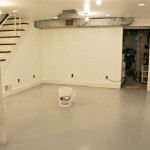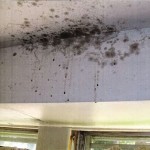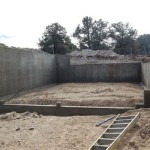Sewer Backing Up In Basement: Essential Aspects and Solutions
Finding sewage water backing up into your basement can be a distressing and potentially hazardous situation. Understanding the causes, implications, and appropriate actions to take is crucial for resolving this issue promptly and effectively.
Causes of Sewer Backup
Several factors can contribute to sewer backups, including:
- Clogged Sewer Lines: Obstructions such as grease, hair, or tree roots can accumulate in the sewer line, blocking the flow of wastewater and causing it to back up into your basement.
- Damaged Sewer Lines: Cracks or breaks in the sewer pipe can allow wastewater to seep out and enter your basement.
- Heavy Rainfall or Snowmelt: Excessive water runoff can overwhelm the capacity of the sewer system, leading to backups.
- Illegal Sump Pump Connections: If a sump pump is improperly connected to the sewer line, it can introduce excess water into the system and cause backups.
Implications of Sewer Backup
Sewer backups pose several risks, including:
- Health Hazards: Sewage water contains harmful bacteria and viruses that can cause infections and other health issues.
- Property Damage: The corrosive nature of sewage can damage carpets, flooring, and other basement items.
- Structural Issues: If the backup is severe enough, it can weaken the foundation of your home or cause flooding.
Immediate Actions to Take
If you experience a sewer backup in your basement, take the following steps immediately:
- Call a Plumber: Contact a qualified plumber to assess the situation and determine the underlying cause of the backup.
- Turn Off Water: To prevent further flooding, shut off the main water supply to your home.
- Avoid Contact: Wear protective gear and do not come into contact with the sewage water.
- Document the Damage: Take photos or videos of the backup and any resulting damage for insurance purposes.
Long-Term Solutions
Once the immediate issue has been resolved, consider the following long-term solutions to prevent future backups:
- Regular Drain Cleaning: Schedule regular professional drain cleaning to remove obstructions and prevent buildup.
- Sewer Line Inspection and Repair: If damaged sewer lines are suspected, have a plumber inspect and repair them to prevent further leaks.
- Proper Sump Pump Connection: Ensure that your sump pump is properly connected to a drainage tile or dry well, not to the sewer line.
- Install a Backflow Preventer: A backflow preventer can prevent sewage from flowing back into your basement in the event of a sewer system backup.
Conclusion
Sewer backups can be a serious problem with potential health and property risks. Understanding the causes, implications, and appropriate actions to take is essential for resolving the issue effectively and preventing future occurrences. By following the recommended steps and implementing long-term solutions, you can safeguard your home and ensure a healthy and safe environment.

Basement Drain Backing Up Here S What To Do Right Now Servicemaster

Why Does My Floor Drain Back Up Structure Tech Home Inspections

Sewage Backup In Basement Causes What To Do How Prevent It

Sewer Backup Basement Drain Flood Causes Cyclone Valves

How To Troubleshoot Sewer Line Problems Pipe Spy

Sewage Backup Cleanup Albany Troy Saratoga Springs Ny

How To Stop A Sewage Backup In Your Basement The Sump And Pump Co

How Spring Can Cause Sewer Backup Problems Flood Services

Why Did My Basement Floor Drain Back Up 1 Tom Plumber

How To Fix Basement Floor Drain Backing Up Avalon Home Inspections








